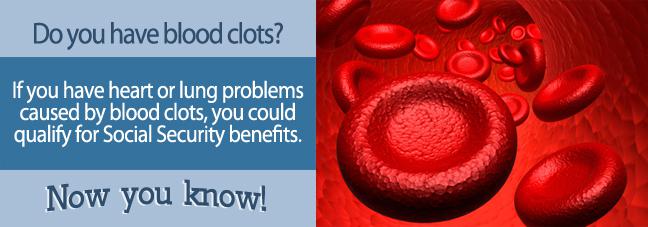Blood clots are the culprit behind many different disorders. While advancing medical treatments are helping blood clots to be less of a threat, there are some people whose conditions continue to keep them from living normally day-to-day.
If you are in need of medical or financial assistance for your blood clots, Social Security disability benefits may be able to provide help. Continue below to learn the three best tips you should know before applying for benefits.
Tip #1: Receive updated CT scans, MRIs, blood tests, and/or stress tests.
When the Social Security Administration (SSA) looks at your application, it wants as much evidence as possible about your current diagnosis. This means receiving new tests (or updating old ones) to give them the best understanding of your condition. CT scans and MRIs can show the location and size of your blood clot(s). They can also be compared to previous scans to show increased size or quantity of clotting. Blood tests can highlight current health and indicate any additional disorders either caused by the blood clots or present alongside them. Stress tests can be used to indicate your current ability to perform normal functions, which can also be compared to previous tests.

Tip #2: Get testimonies from old bosses and coworkers to confirm your inability to work.
As a general rule of thumb, it is always best to provide more evidence than less when applying for disability benefits. This means documenting medication lists, hospitalization visits, therapy notes, physician notes, and even getting testimonies from previous work places. Boss and coworker testimonies can give the SSA an idea of how your condition limits your ability to work normally. If you are deemed unable to work, there is a much higher chance you will qualify for benefits. In fact, even people who don’t meet the “official” listing for their disorder can still receive benefits if they are unable to return to any form of substantial work.
Tip #3: Continue to take your medication, visit your physician regularly, and update the SSA along the way.
After submitting your application, it is important to continue doing as much as possible to heal and find positive treatments for your blood clots. Continue taking your medication as directed, and be sure to update the SSA should your medications change (this can help to further show your medical/financial need). Be sure to also make regular visits with your physician and receive an updated test or diagnosis whenever you notice symptoms changing. The SSA appreciates and strongly encourages applicants to maintain contact after applying, as it can greatly improve your eligibility.
Contacting a Social Security Attorney
The disability application process is a long and tricky one. Even small typos or missed paperwork can contribute to a qualified applicant losing the benefits they deserve. To keep this from happening to you, consider speaking with a disability attorney before starting your application. Attorneys can help you complete your application, update medical records with the SSA, and even represent you in court should your case require an appeal.
Consider a free consultation with a disability attorney to give yourself the best chance at receiving monthly benefits for your blood clots.